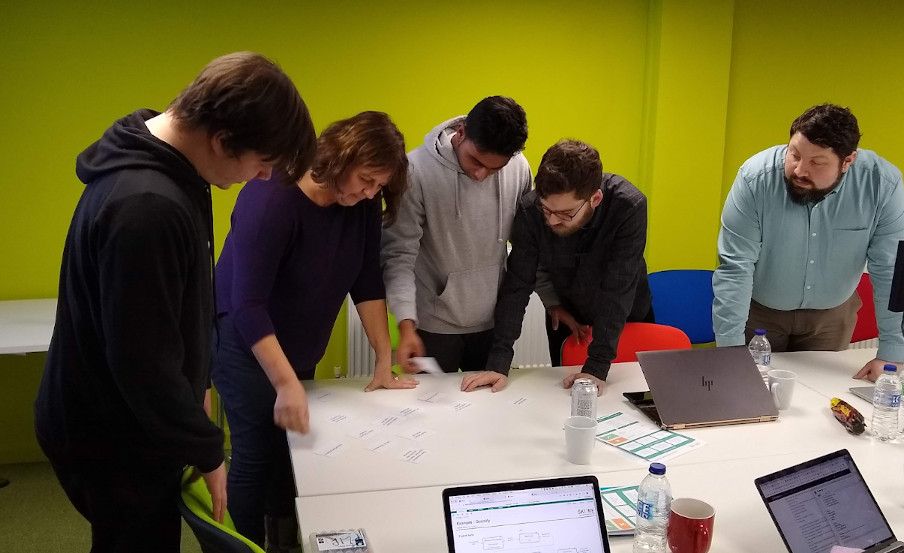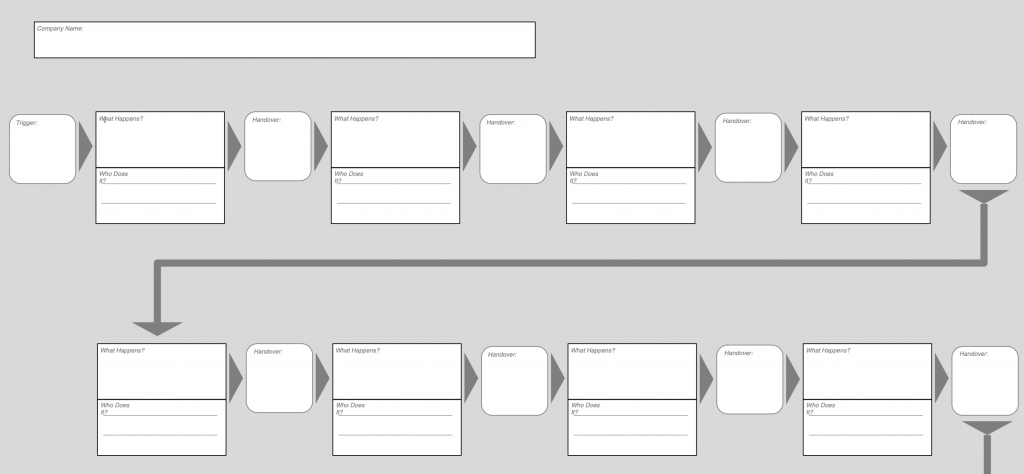Business Process Training Game
Training teams on the importance of business process mapping, and how to do it, can be daunting. Process mapping can be a dry topic and it may be a challenge to make it more interesting. But using a process training game not only engages people and is a powerful tool to get your point across effectively.
The Skore process improvement platform is all about making processes easy to understand and accessible for everyone in an organisation. However often, there is still a need to train people to understand the importance of business processes in the first place. In this blog we’d like to share a selection of games we regularly use to engage people in process training and design workshops. We hope you find them useful and would love to know how you get on with using them in the comments below.
A simple business process training game
To start with here is a simple process training game we’ve used in many training sessions in the past. It’s a very straightforward exercise that gets people out of their seats and thinking about basic process flows.
First provide a set of cards to the attendees that each describe individual steps in a predefined process. You can download a set of cards that describe a recruitment process below.
Some of the cards are activities – things that happen, and others are triggers or outputs. You can see in the recruitment process that we provide that it starts at the top left of the first page and flows left to right, top to bottom. Print and cut the cards out. Shuffle them and hand them to the group asking them to place the cards in the right order

The trick is to get them to follow a simple methodology. They should start with defining the scope, where does the process start and where does it end. Our 5 steps to the Perfect Process guide will also help with this which you can download below.
Next they lay out all the activities. The activity cards are clearly described using a verb and noun. The group should lay these out between the initial input and final output. When this is completed they should lay down the outputs from each activity.
This is a great exercise for getting people to remember the 5 step methodology and to think about the key difference between an activity and an output from each activity. For larger training groups it can be even more fun to break the group into smaller teams and have them compete for who finishes the exercise first.
Process training game for Directors and Execs
This is a similar game to the above but also includes a board on which to place the cards. As well as training people to think about high level value stream processes, it’s also useful ‘homework’ for business leaders to do before a process workshop.
In this game there is a set of cards that describe high level activities, or capabilities, within common types of organisations. These cards are designed to be double sided so each sheet should be printed on the back of the previous sheet. Download the cards and board described below here.
On the front of each card is a high level activity. On the back of each card is a description of that activity. Once you have printed and cut out the cards you can print out the board on an A3 or over two A4 sheets.

In the exercise the group has to agree which of the key activities are relevant to their business. Then they should place them on the board in the preferred sequence. Note, it’s not always possible to put all activities in a perfect sequence – thats ok. Its a great way however, to generate a discussion about why and how else they may be placed. You can use a marker pen to draw lines if you need to. Let the group be free to discuss and explore the topic.
Next the group needs to discuss, and then write down the first input and final output on their sequence. Once this is done they then need to complete each of the handover points between each activity. This will generate a lot of important discussion and often leads to improvement suggestions that need to be recorded. Make sure you or someone in the room is ready to take notes. You may find some really interesting points come out of this part of the session.
Finally the team needs to fill out the Owner section under each of the activities. This means that they decide who, in the business, is ultimately accountable for the execution of each activity.
The cards can be stuck to the board but typically it needs to be documented in some way once the exercise is complete. Make sure you have a way to do this, you can always use the Skore platform as one easy way to map online.
Process improvement game
We are also going to include this fun game that can be used to come up with some real process improvements. We find it is useful in training as well as in a real process improvement workshop. The idea for this game originally came from Alec Sharp and is described in his book here.
The idea of this game is to take an existing process and try to identify improvement opportunities. When teams are so used to the existing process it can be hard for them to come up with new ideas. Therefore in this exercise the team takes a different view of the process which helps highlight issues.
With the process visible to everyone, a nominated speaker walks through the process out loud. However, at each step in the process the speaker articulates that step as something that absolutely MUST be done.
This forces the rest of the team to really think about why it MUST be done and whether it’s really necessary or can be replaced by something easier.
Really simple steps in a process can sound ridiculous when articulated in this way so it sparks a bit of fun. In doing so it also releases fun suggestions that can lead to real improvement ideas.
This game is highly recommended where teams are looking to run process improvements on existing processes.
Dogs in space game
Finally Dogs in space is our name for a lateral thinking exercise that’s particularly useful where you are looking to truly transform a process, or design something completely new. Lateral thinking exercises can seem a bit awkward at first but once the team gets going it can be a liberating experience.

The object of the exercise is to come up with the most far fetched ideas based on the vague context of the problem that you want to solve (see our Petcare example below). Each member of the group should come up with an idea. The ideas are shared and then the group votes on their favourite idea.
Next the team must try to work out how they will achieve the solution. What are the steps required to get there and how would it work. During these solution sessions teams will often come up with innovative ideas for solving long standing problems.
The name of this exercise came from a Petcare company who were looking to expand their service offerings. The team were challenged to think of new services they could offer to pet owners. Using this type of lateral thinking, one of the suggestions was to put a dog on the moon. This was chosen by the group to explore further.
One of the challenges for putting a dog on the moon is the transport required to get there. The team discussed partnering with SpaceX to use their rockets to get there. Then they explored how they would kit out the rocket to be dog friendly. A team of experts would be assembled that had different skills drawn from the existing business.
It was at this point that the team realised this new group of experts could actually be used to provide advisory services across different industries. Advising businesses on making the workplace pet friendly, advising hotels and tourist attractions etc. In this way a new service line was developed and launched by the company. This is a really great example of how what can be perceived as a little fun can actually produce some great insights and bright ideas for the organisation.
Conclusion
Each of these business process training games are designed to help educate teams on the nature and benefits of business process improvement. When you’re buried in a process everyday it can be very hard to think differently about it. Each of these games provide a different lens for people to look at their processes and come up with new ways of working.
At Skore we use these in training or real live process workshops to kick off conversations. The Skore platform uses UPN (Universal Process Notation), the simplest way to capture and describe a process and is designed to be understood by everyone in the organisation, not just the experts. Processes can be visualised and mapped straight into the software while people describe them. These games make an excellent addition to workshops that help accelerate process improvement and generate innovative new ideas that can again be captured directly into Skore and shared with the wider team.

Appreciate the recommendation. Will try it out.